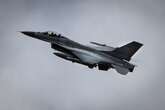In a world where cyber threats, volatile markets, regulatory changes, and supply chain disruptions are common, business leaders face the need for rapid, high-stakes decisions under pressure. Traditional advice to “show me the data” falls short. What can leaders do? They can learn from people who have successfully navigated extreme events, like former U.S. Navy fighter pilot and Qantas captain Kevin Sullivan.
On a calm, clear day in October 2008, Qantas Flight 72 from Singapore to Perth faced a critical emergency, with the fate of 315 passengers and crew in the hands of Sullivan. Cruising at 36,000 meters, the onboard computers broadcast contradictory signals before pitching the plane into two violent dives, wrenching the pilots from their seats and sending passengers and equipment crashing into the ceiling and back. More than 100 people were seriously injured as the pilots fought for control of the Qantas A330-300.
Sullivan’s decisive actions saved all 315 people on board, offering compelling lessons for business leaders making decisions under pressure.
Build your tool kit
Recalling the moment of loss of control, Sullivan drew on a life spent, “Preparing for the unpreparable.”
When asked how anyone can prepare for the unpreparable, Sullivan responded with characteristic clarity and confidence, “I had lots of extreme experiences. From early years playing sports, in high school as class president, at university, in the U.S. Navy as platoon commander, and when landing fighter jets on aircraft carriers at night. That’s how you build your mental tool kit, so it is there for moments when you need it.”
What’s in the tool kit? Sullivan shares five compelling lessons for every business leader faced with making decisions under pressure.
Startle, then calm
Everyone experiences the startle effect when an extreme event occurs. Adrenaline surges, heart rate spikes, and the mind goes into temporary confusion. “Resist the temptation to react,” Sullivan advises. “It can make the situation worse.”
His method and advice for business leaders is to pause, breathe, stay calm, and allow time to assess. Neuroscience supports this approach. A brief pause allows the brain’s prefrontal cortex to engage, leading to more rational decision-making, even under pressure.
Frame to regain control
Sullivan shares a key mind tool of pilots: “Aviate—navigate—communicate.” Honed from years of aviation challenges, the skilled pilot shifts from startle to control.
Aviate: Keep the plane in the air. “I’ve got to fly the plane. Am I out of control? Yes. I’ve got to regain control,” affirms Sullivan.
Navigate: Find somewhere safe to land before the plane dives again.
Communicate: Coordinate with copilots and ground support to handle serious injuries.
The business lesson is to build a tool kit of mental models for complex situations. For instance, the book Toolkit for Turbulence teaches a three-step process: “Align—collaborate—learn.” This model helps leaders set up their teams for agility and adaptability, ensuring they can navigate through crises effectively under pressure.
Huddle, then spread
Sullivan’s ability to trust and delegate to his copilots was crucial. “You’ve got to know what kind of leader you want to be. My leadership style is flat but I’m still responsible,” he says, contrasting his approach to the traditional command and control method of many commercial pilots that can make people cautious about openness. “I needed input: What do you think? What are you seeing? How can I help you?” His way is for everyone to spread out with the initiative to act and to report back, reinforcing fast collaborative teamwork under pressure.
Sullivan shares a powerful lesson for business leaders about trust. “The standards and trust you built before the crisis will come into play now.” He challenges leaders to call out when behaviours don’t meet standards by simply stating: “That’s not the way we do it.” It’s an investment for that future extreme event.
Innovate and find solutions
During the QF72 incident, Sullivan demonstrated remarkable innovation, bending traditional rules to address unique challenges. For example, when the flight computers malfunctioned, he momentarily released the controls to allow the plane’s automated systems to reset, a risky but life-saving decision.
Unprecedented challenges require creativity and the willingness to deviate from standard procedures whether in aviation or business. When traditional strategies fail, leaders might need to pivot dramatically, and we saw it often during the pandemic as businesses reinvented their models overnight.
Communicate with clarity and care
Clarity is vital in high stakes moments. Sullivan’s collaborative communication style helped manage the situation. He not only dealt with cockpit challenges but also cared for injured and traumatized passengers on the ground.
In business, regular, transparent communication can keep everyone focused on solutions in even the fastest moving and challenging of circumstances.
Drawing from a lifetime of preparing for the unpreparable, Sullivan advises business leaders to build a diverse tool kit and cultivate readiness. He emphasises managing the startle effect by using simple mental models to stay composed and solve problems.
While the leader holds accountability, tackling extreme challenges requires a team effort. Trust, effective delegation, and flexible thinking encourage innovation, enabling leaders and their teams to successfully navigate unprecedented challenges under pressure.








No comments